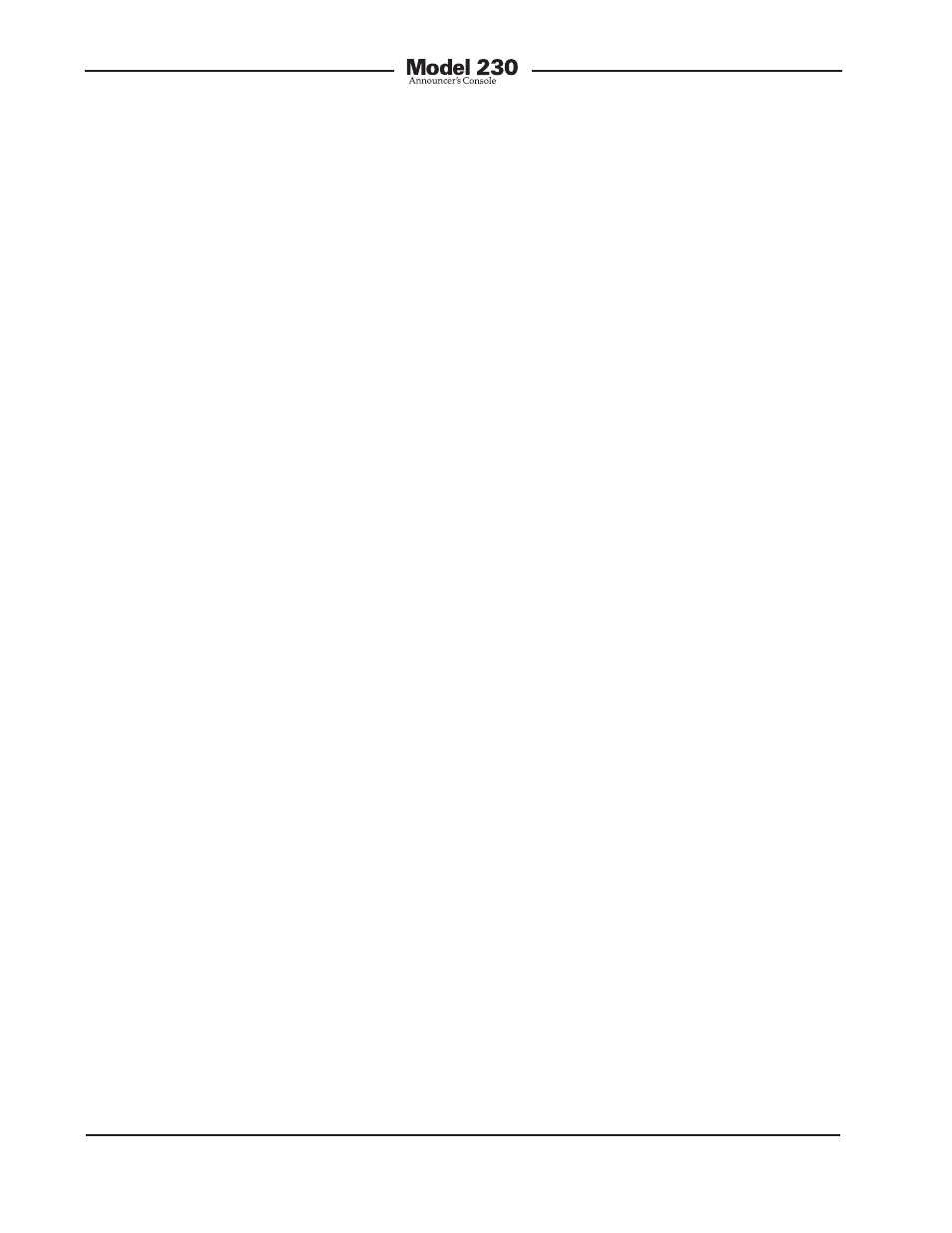Ifb audio levels – Studio Technologies 230 2008 User Manual
Page 38

Issue 7, October 2008
Model 230 User Guide
Page 38
Studio Technologies, Inc.
This occurs because the audio paths are
unbalanced (“single-ended”) and typically
transported on a single shielded twisted-
pair audio cable. The primary cause of
the crosstalk is the capacitance between
the wires in the cable pair. The greater the
capacitance, due to cable type and length,
the more crosstalk there will be. It’s not
surprising to find in sports broadcasting
venues that audio from one channel in an
IFB circuit can be heard “bleeding” into
the other channel. Does this generally cre-
ate a problem? No, as each channel in an
IFB circuit generally carries related audio
content. For example, on-air talent hearing
in their left ear a small amount of program
audio from channel 2 while an interrupt
from channel 1 is active, typically wouldn’t
perceive this as an issue.
There are several ways of reducing IFB
channel crosstalk. Probably the easiest
way is to use cable pairs that are not
twisted. Twisted pairs are great for differ-
ential (balanced) signals, but not so great
for unbalanced transmission. This is gen-
erally because the more twists in a pair the
greater the effective cable capacitance.
In a stadium or arena setting, choosing
standard “telco” pairs may actually work
better than “high-performance” audio or
data cable!
Another option is to use two cable pairs
for each IFB circuit. If the pairs are not
shielded the wiring is simple. Common
would be connected to one side of each
pair, and then signal from each channel
would connect to the other side of the
pairs. If the pairs also contain shields
the wiring could be done somewhat differ-
ently. One option is to connect common
to both cable shields, IFB channel 1 (DC
with audio) to one full pair, and IFB chan-
nel 2 to the second full pair. A better
option might be to have common connect
to both shields and one side of the pair
that serves IFB channel 2.
Other options are available if an applica-
tion demands low crosstalk. If resources
in the broadcast or production facility
allow one method would be to run the
IFB circuits “dry” (no DC) and differential
(balanced). This would gain the benefits
of differential transmission, including mini-
mizing the crosstalk. The balanced line-
level signals can be directly connected
to the Model 230’s line inputs. However,
if it’s desired to connect cue sources to
the Model 230 using an IFB-type circuit,
the line-level audio signals will need to be
“wetted up” into standard IFB circuits.
This is easily accomplished using one
of several high-performance IFB interface
units from Studio Technologies. For
further information please refer to the
Studio Technologies website.
The discussion in the previous paragraphs
concerning IFB circuits can also apply to
single- and dual-channel intercom lines.
The same type of cabling is typically used
for both, resulting in the same crosstalk
issues. However, by their very nature as
“party line” systems, inter-channel cross-
talk on intercom lines should not prove
to be a problem. With multiple intercom
stations and belt-packs active at the same
time, the noise level and user voices pres-
ent on these lines should mask any cross-
talk that occurs.
IFB Audio Levels
The Model 230 is designed to operate
best with IFB audio levels that are nomi-
nally –10 dBu. This is the nominal level of
most IFB systems, such as the RTS 4000-
series. But actually having the correct level
present on an IFB circuit is often a “hit-or-
